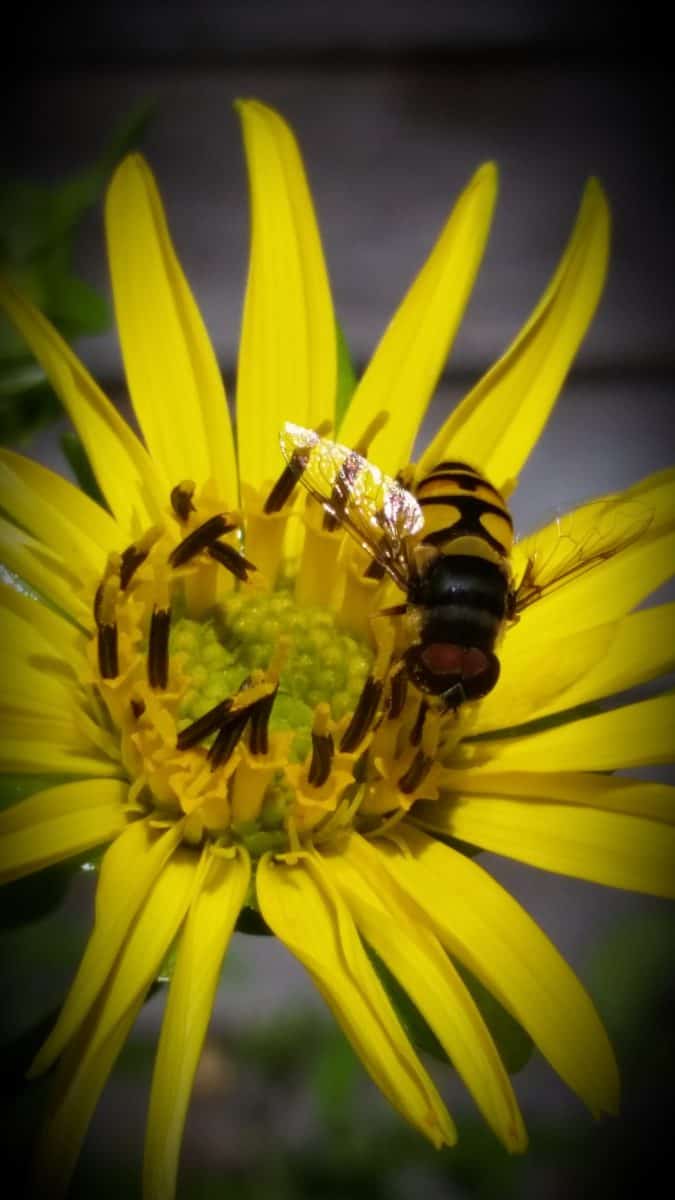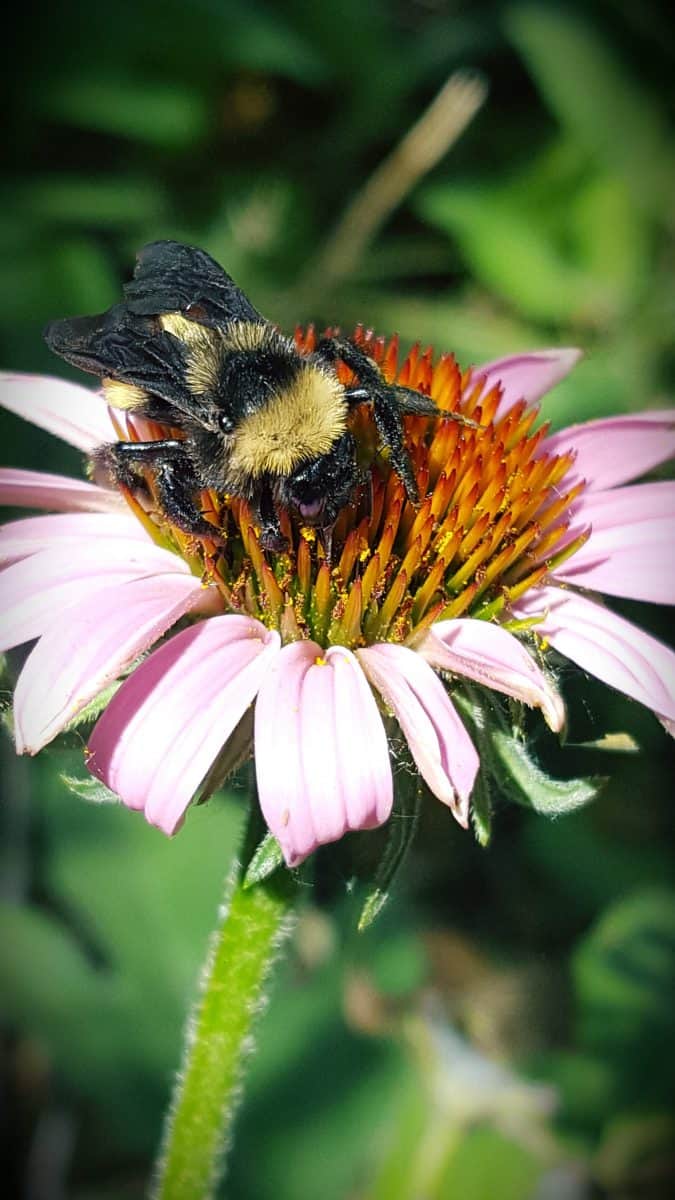But what are flying flowers? When I was growing up, I used to love poring over the photos in Birds & Blooms Magazine, which I read at my Grandma’s house. In the magazine, they had a section called flying flowers, which were photos of butterflies. I learned a lot about butterflies and gardening that way. And now I have information to share.
This week is National Pollinator Week, where the United States and the world share an appreciation for our pollinators. And what are the best ways to appreciate pollinators? By learning about them and dedicating areas of our gardens, parks, and natural byways just for them. What do we know about them? How many species are there? Are some crops not pollinated by insects and animals?
Facts about Flying Flowers

First, what do we know about pollination? Pollination is the act of getting pollen from the anther of a flower to the stigma, or from the male plant part to the female plant part. There are different ways in which a plant can get pollinated. Wind is one of the most useful pollination tools. But we are mostly here to talk about the flying flowers, which are butterflies, moths, flower flies, beetles, bees, and wasps. Hummingbirds, bats, and other animals are also pollinators.
- It has been estimated that between 70 and 75 percent of all flowering species are pollinated by animals.
- Wind pollinated crops include wheat, corn, barley, rye, rice, oats, kamut, walnuts, pecans, pistachios, and oaks.
- Some of the crops pollinated by flying flowers include apples, peaches, pears, plums, apricots, almonds, blueberries, cranberries, melons, and squash.
- Squash bees only pollinate members of the cucurbit family, including pumpkins, gourds, and squash.
- Moths pollinate both day and night.
- A single southeastern blueberry bee can pollinate between 6000 and 50,000 blueberry flowers in its lifetime.

How many species of flying flowers are there in the United States?
- 4,000 species of bees, including bumblebees, solitary bees, and orchard bees. Honeybees are not native.
- 4,000 species of wasps. Wasps are often forgotten in pollination because they get a bad rap from social wasps, of which there are only a few species.
- 750 species of butterflies. The most well-known is probably the Monarch.
- 11,000 species of moth. This is a staggering number of flying flowers that I have been diligently trying to learn.
- 870 species of syrphid flower flies. Flower flies not only pollinate, but their larvae eat pests like aphids and mealybugs.
- 77,000 species of beetles. Beetles, often overlooked, are often the best pollinators of many plants.
Ways to Help Flying Flowers
How can we as gardeners work to make our landscape more appealing to visiting pollinators? There are lots of ways but the 3 following statements are the best ways to start.
- Learn what flowers pollinators are most attracted to, and plant them.
- Reduce the area of lawn, converting it to meadow or flower garden space. Lawn is a dead zone for flying flowers.
- Reduce or eliminate your use of pesticides and herbicides. These not only affect pests, but beneficials and pollinators too. Diversity in the landscape will decrease pest problems.
What flowers are pollinators most attracted to?
There are many different groups or families of plants that pollinators are most attracted to, and different species and ciultivars within those groups. Bright colors, lovely scents, and multi-colored flowers all play a part in attracting different pollinators. Each flower has its own unique way of attracting a certain pollinator.
Host plants also play an important role is attracting pollinators. Having a variety of host plants, whether trees, shrubs, or perennials, means having a permanent group of flying flowers in your garden.
Plant Families for Pollinators
The following are plant families and the best flowers for your garden that attract a wide range of pollinators, providing both pollen and hosting.

Parsley Family
While many of these flowers are best suited for meadow and prairie gardens, they are pollinated by many species. Parasitoid wasps, flower flies, and sweat bees are the biggest pollinators of these species. They also host black swallowtail butterflies and a dozen or so moths.
- Rattlesnake Master
- Sea Holly
- Leavenworth Eryngo
- Dill
- Parsley
- Wild Carrot
- Golden Alexanders
Dogbane Family

Members of this family include dogbane and all the milkweeds. Most of the milkweeds are very fragrant and make excellent additions to the garden, though some species are weedy. They attract a large number of flying flowers including moths, butterflies, bees, wasps, flower flies, and beetles. Milkweeds are host to Monarchs, Queen and Soldier butterflies, milkweed tussock moth, and cycnia moths.
- Dogbane
- Common Milkweed
- Butterfly Milkweed ‘Hello Yellow’
- Marsh Milkweed ‘Cinderella‘ & ‘Ice Ballet’
- Whorled Milkweed
- Sullivant’s Milkweed
- Spider Milkweed
Sunflower Family
This is perhaps the largest plant family in North America, though not the largest worldwide. There are many species of sunflowers, asters, and more available to the home gardener. Expect to see butterflies, moths, bees, wasps, beetles, and flower flies. They are host to many butterflies and moths.

- Willowleaf Sunflower
- Annual Sunflower
- Maximillian Sunflower
- New England Aster ‘Purple Dome’
- Aromatic Aster
- Yarrow ‘Moonshine’ & ‘Paprika’
- Coreopsis
- Purple Coneflower ‘Sombrero Series’
- Pale Purple Coneflower
- Glade Coneflower
- Blanketflower
- False Sunflower ‘Burning Hearts’
- Blazingstar ‘Kobold’
- Rudbeckia ‘American Gold Rush‘, ‘Glitters Like Gold’, ‘Little Henry’, & ‘Herbstonne’
- Cup Plant
- Compassplant
- Rosin Weed
- Elm-Leaf Goldenrod
- Goldenrod ‘Fireworks‘ & ‘Little Lemon’
- Ironweed ‘Iron Butterfly’

Bean Family
This family has a large number of plants that are very attractive bumblebees, some butterflies, and beetles. They also host many moths and butterflies, including sulphur butterflies and various skippers.
- Baptisia ‘Cherries Jubilee‘, ‘Twilite Prairieblues‘, & ‘Sparkling Sapphires‘
- Purple & White Prairie Clover
- Wild Licorice
- Wild Senna
- Bread-root Scurf Pea
- Wild Alfalfa
- Silverleaf Scurf Pea
Mint Family
When most people think about mints, they see the aggressive non-natives like spearmint and peppermint. Most of the native mints are well-behaved and attract many butterflies, moths, bees, wasps, and flower flies. Mints host a variety of moths including the Hermit sphinx moth.

- Slender Mountain Mint
- Hairy Mountain Mint
- Blunt-leaf Mountain Mint
- Beebalm
- False Dragonhead
- Wood Betony
- Blue Sage
- Betony ‘Hummelo’
- Agastache ‘Blue Boa’, ‘Blue Fortune’, & ‘Kudos Series’
- Catmint ‘Cat’s Pajamas‘ & ‘Blue Wonder‘
- Calamint
- Lavender ‘Munstead’
Other Plants that Attract Flying Flowers
- Hollyhock
- Fall Phlox
- Penstemon
- Rose Verbena
- Woolly Verbena
- Tall Sedum ‘Autumn Fire’ & ‘Autumn Joy’
- Ornamental Onion ‘Millenium’ & ‘Summer Beauty’
- Butterfly Bush
How can reducing my lawn improve pollinator habitats?
Do not get me wrong, I love green lawn spaces. They are the prefect resting place for your eyes when traveling across the garden. And if planned correctly, you can use them for football, soccer, or baseball with your kids. But in terms of pollinator success, lawns are a no fly zone.
The lawn is a conundrum. Originally, only the wealthy could afford manicured lawns. Now, Americans see the lawn as a status symbol. The bigger and better your lawn, the more pride you take in it. But lawns are a waste of space and resources from a pollinator’s point of view. If you could allow for pollinators to access the grass as a host plant or if there were small, carpet sized flowers scattered throughout, the flying flowers would be happy. But there goes the status symbol.

So what do we do? We must compromise. Have your landscape planned out to provide both lawn and garden space, using the space wisely. If you do not have or expect to have kids playing in the lawn, then reduce the size to maximize pollinator potential. Maybe try making some circular lawn beds that are connected by gravel paths. Or a diamond shaped lawn.
Once your lawn is trimmed down in size, you can add sweeps of perennials, shrubs, and trees to the landscape, boosting habitat for flying flowers. Or maybe, make a meadow garden. Meadow gardens are 60-70% grass, with 30-40% perennial and annual forbs. It too can be a resting place for the eyes, when jumping from bed to bed. And grasses host a large number of moths, as well as grass skipper butterflies.
Reducing or Eliminating Chemical Use to Attract Flying Flowers
How can we as gardeners get to a point where it is not necessary to use chemicals in our gardens? Well, it is almost impossible to completely eliminate them. At least as long as there are invasives such as Japanese beetles, Emerald Ash borer, spotted lanternfly, or others. But we can greatly reduce the need for chemicals.
Creating a biodiverse landscape is the fastest way to becoming mostly chemical-free. You can still do big sweeping borders and mass plantings, but have them different in different beds. Diversity is key to reducing pesticide use. If you have a wide range of plant genuses and species, you will attract not only more pollinators, but more beneficial insects. Beneficials like assassin bugs (which eat Japanese beetles), or parasitoid wasps which feed on a variety of other insects.
One thing to note; using chemicals can actually cause your problem to worsen. Broad spectrum insecticides, such as Sevin (carbaryl), kill off every insect it touches, whether honeybees or aphids. Using these chemicals kills off the good and the bad, but with more harm to the good. There are usually a few pests that survive the application, and becuase they can produce offspring faster than beneficials, they may overwhelm plants before the beneficial can catch up.
Try to use only target-specific applications of sprays, spraying only the insect in question, if possible. Time all sprays to be in the evening, after bees and other pollinators have settled down for dark. You may still catch night-moving moths though. Target only those pests that are completely destroying plants, such as Japanese beetles or blister beetles. Use systemics for Emerald Ash borer, if the tree is worth saving.

Conclusion
Flying flowers are fun to watch, learn about, and plan for. One of my favorite things to do in the garden is watch the pollinators flitting about. There are always more flying flowers to discover.
Happy planting!



